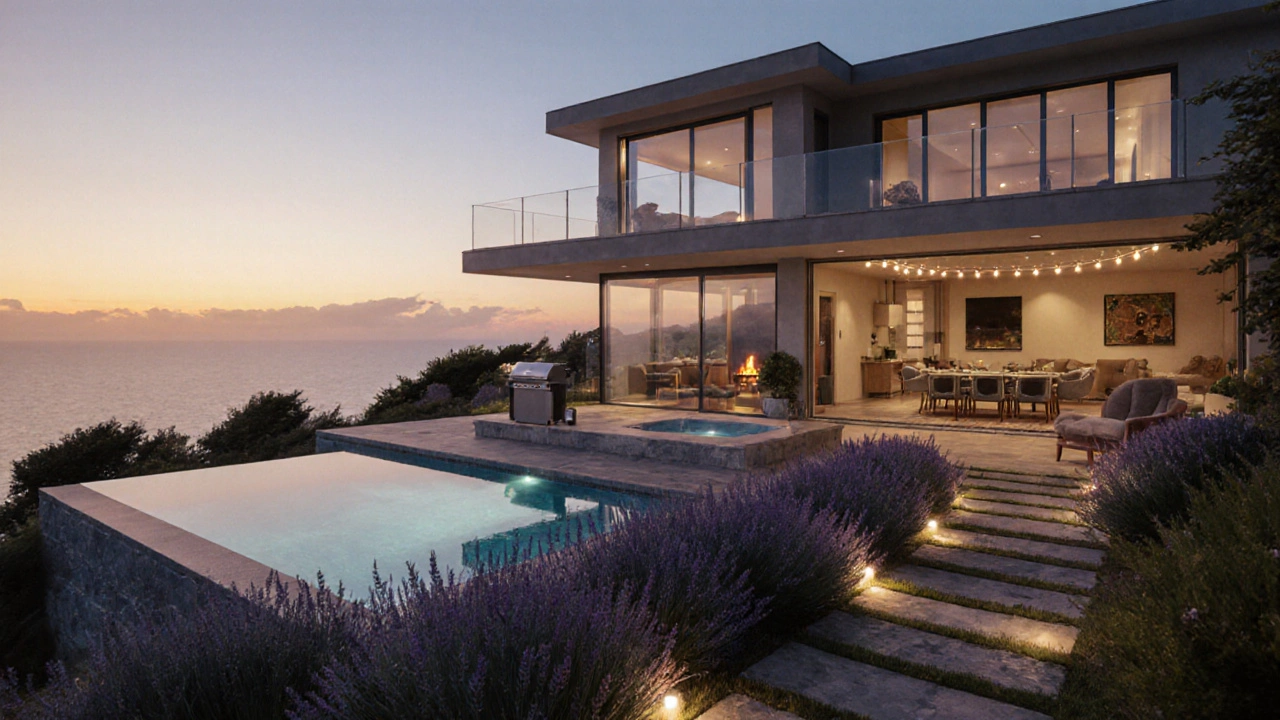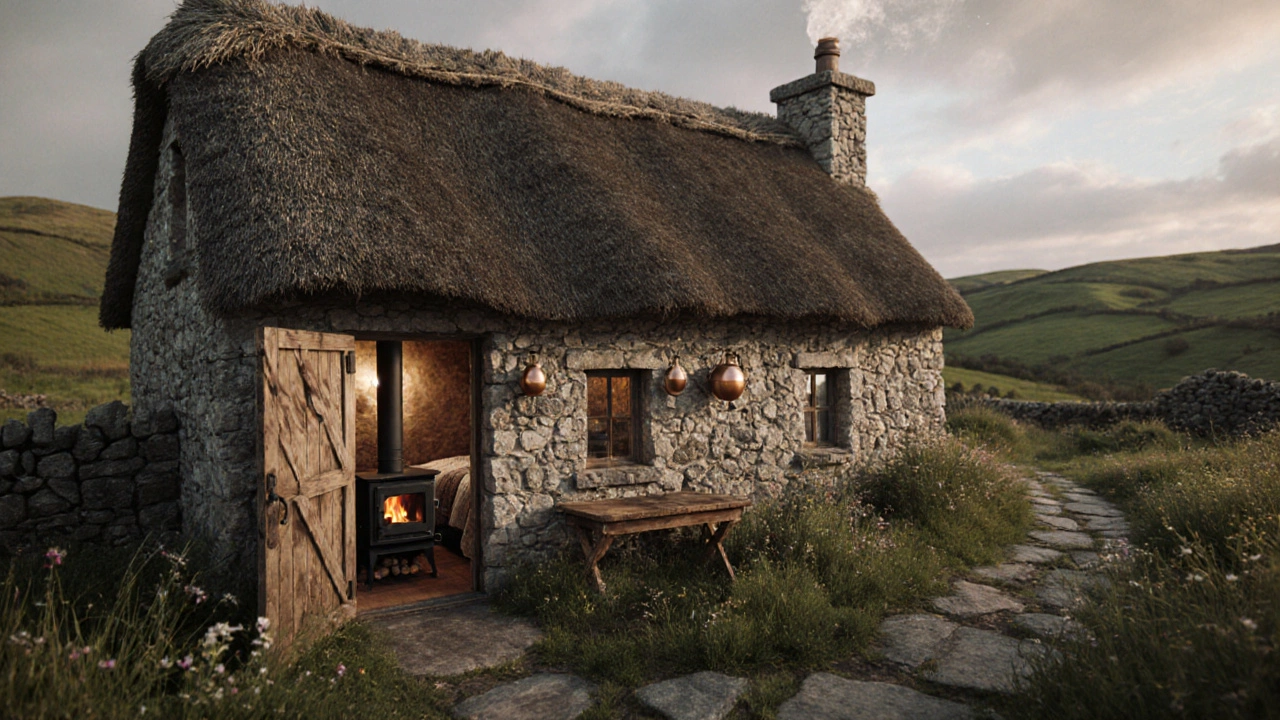Self-Catering Accommodation Finder
Find Your Perfect Stay
Answer these 5 questions to discover which type of self-catering accommodation suits your trip best.
Your Recommended Accommodation
Based on your answers, we recommend:
Why this is ideal for you:
What to expect:
When you’re planning a getaway, self-catering accommodation gives you control. No hotel breakfasts at 7 a.m. No room service charges. No noisy hallways. Just your space, your schedule, your way. But not all self-catering stays are the same. If you’ve ever booked a cottage, thought you were getting one thing, and ended up with something totally different-you’re not alone. There are three main types of self-catering accommodation, and knowing the difference saves money, time, and disappointment.
1. Traditional Self-Catering Cottages
This is what most people picture: a small, cozy stone or timber house tucked into the countryside, maybe with a thatched roof or a stone chimney. These cottages are often older buildings, sometimes dating back 100+ years, converted into fully equipped homes for rent. You’ll find a full kitchen with a stove, fridge, dishwasher, and pots and pans. There’s usually a living area, one or more bedrooms, and a bathroom. Some have gardens, fireplaces, or even hot tubs.
These cottages are ideal for families or groups who want to cook meals, relax slowly, and feel like they’re living in the place, not just staying there. In Ireland, you’ll find these in places like Connemara, the Dingle Peninsula, or the Wicklow Hills. They’re not always modern-some have uneven floors or small windows-but that’s part of the charm. The key is that everything you need to live independently is included: bedding, towels, cleaning supplies, even coffee and tea.
What to watch out for: older cottages might not have central heating, or the Wi-Fi could be spotty. Always check the listing for details on heating, hot water, and internet. Don’t assume. I once booked a cottage in County Clare that had no hot water until noon because the boiler was gas-powered and turned off overnight. Learned that the hard way.
2. Modern Self-Catering Apartments
Think city breaks, coastal towns, or places with a busy vibe. These are usually units in converted buildings-old factories, townhouses, or purpose-built complexes. They’re cleaner, newer, and often have better insulation, modern appliances, and smart thermostats. You’ll find open-plan layouts, stainless steel kitchens, and sometimes even smart TVs and voice assistants.
These apartments are great for couples, solo travelers, or small groups who want convenience without sacrificing independence. You can walk to cafes, shops, or public transport. In Dublin, you’ll find these in areas like Temple Bar, Dalkey, or Sandymount. Many come with parking, which is a huge plus in cities where parking costs €50 a day at hotels.
Unlike cottages, these are often managed by professional hosts or companies. Check-in is usually digital-key codes, app access, or lockboxes. Cleaning happens between stays, so you won’t find last guest’s coffee mug in the sink. But be careful: some listings call themselves “apartments” but are just a bedroom with a mini-fridge and a microwave in a shared building. That’s not self-catering. True self-catering apartments have a full kitchen: oven, hob, sink, and storage for groceries. Look for those keywords.

3. Holiday Homes and Luxury Self-Catering Villas
This is the high-end version. Think large houses with multiple bedrooms, private pools, outdoor kitchens, saunas, or even home cinemas. These aren’t just cottages with upgrades-they’re designed as full luxury experiences. You might find them in the countryside, on a hillside overlooking the sea, or tucked into a private estate.
These are popular for big family reunions, anniversary trips, or groups of friends who want space and privacy. In places like County Cork or the Aran Islands, you’ll find villas with panoramic views, underfloor heating, and professional-grade kitchens. Some even include a concierge who arranges grocery deliveries, chef services, or local tours.
The catch? Price. A luxury villa might cost €1,500 a week, while a traditional cottage runs €700. But if you’re splitting it four ways, it’s still cheaper than four hotel rooms. And you get things you won’t find elsewhere: outdoor dining areas, fire pits, hot tubs, and sometimes even a games room or cinema. These places often come with detailed guides-local restaurants, hiking trails, best beaches, even recipes for Irish stew using ingredients you can buy nearby.
One thing to always confirm: is cleaning included? In luxury villas, some include daily housekeeping, others expect you to leave it as you found it. Read the fine print. I booked a villa in Donegal once that said “weekly cleaning,” but the cleaner didn’t show up. We spent our last day scrubbing the kitchen. Never again.
How to Choose the Right One for You
It’s not about what’s fanciest. It’s about what fits your trip.
- Choose a traditional cottage if you want authenticity, quiet, and a real sense of place. Great for slow travel, nature lovers, or anyone who likes to wake up to birdsong.
- Choose a modern apartment if you’re in a city, want easy access to transport, and need reliable Wi-Fi and heating. Best for short breaks, business travelers, or couples.
- Choose a luxury villa if you’re traveling with a group, want to entertain, or just want to treat yourself. Ideal for celebrations, multi-generational trips, or when you need total privacy.
Don’t fall for photos alone. Look at reviews-especially ones with photos from guests. See if the kitchen looks real. Is the sofa worn? Are the beds clean? Ask the host: “Can I see a detailed list of what’s included?” Many forget to mention things like dish soap, toilet paper, or even a kettle. If they can’t answer, keep looking.

What to Pack for Any Self-Catering Stay
Even if the place says “fully equipped,” bring these basics:
- Laundry detergent (small packets)
- Tea bags and coffee (you never know if they’re stocked)
- Trash bags (sometimes they’re not provided)
- Adapters for plugs (especially if you’re coming from outside Europe)
- A notebook and pen (for local tips the host leaves behind)
- Basic cooking tools if you’re picky-like a good whisk or garlic press
And don’t forget the most important thing: a sense of adventure. Self-catering isn’t just about saving money. It’s about feeling like you belong there-even if it’s just for a week.
Are self-catering cottages cheaper than hotels?
Yes, usually. A self-catering cottage for a family of four often costs less than two hotel rooms, especially when you factor in meals. Cooking your own breakfast and dinner can save €30-€50 per day. Over a week, that’s €200-€350 saved. Plus, you get more space and privacy.
Do self-catering places have Wi-Fi?
Most do, but not all. Rural cottages in Ireland, especially in the west, can have spotty or slow internet. Always check the listing for Wi-Fi speed or mention it in your message to the host. If you need reliable internet for work or streaming, look for places that specify “high-speed broadband” or “fiber.”
Can I bring my pet to a self-catering cottage?
Some allow pets, many don’t. Always ask before booking. Pet-friendly cottages usually charge a small fee-€20-€50 per stay-and may have rules like keeping pets off furniture or out of bedrooms. Look for listings that say “dog-friendly” or “pet welcome.”
What’s the difference between a holiday home and a self-catering cottage?
There’s no strict legal difference, but in practice, “holiday home” usually means larger, newer, and more luxurious-think five bedrooms, a pool, or a games room. “Cottage” suggests smaller, older, and more rustic. But the term is used loosely. Always check what’s included, not just the label.
Is self-catering better for families?
Yes, especially for families with young kids or picky eaters. You can cook meals on your schedule, store snacks, and have a space where kids can play without disturbing others. Plus, having a washing machine means no laundry stress. Most family-friendly self-catering places include high chairs, cots, and even toys.
Next Steps: How to Book Smart
Start by deciding what kind of trip you want. Quiet and rustic? Book a cottage. City buzz? Go for an apartment. Luxury and space? Look for a villa. Then, use trusted sites like Airbnb, Booking.com, or local Irish platforms like IrishCottages.com or HolidayCottages.ie. Filter by “fully equipped kitchen” and “self-catering.”
Read the house rules. Check the cancellation policy. Message the host with questions. If they reply fast and clearly, that’s a good sign. If they’re vague or don’t answer, move on. Your stay depends on it.
Self-catering isn’t just a cheaper way to travel. It’s a different way to experience a place. You’re not a guest. You’re a temporary local. And that changes everything.
